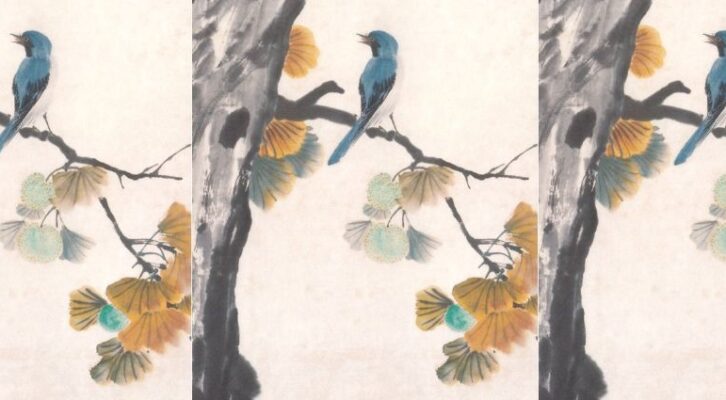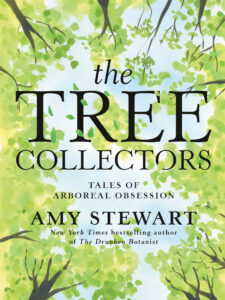
In Praise of Ginkgo Biloba, China’s Ancient, Everlasting Tree
Amy Stewart Talks to Jianming (Jimmy) Shen, the Ginkgo Chronicler of Hangzhou
Hangzhou, a city of twelve million in eastern China, is known for its cultural riches and natural beauty. It has been continuously inhabited for more than two thousand years and straddles the ancient Grand Canal, the longest of its kind in the world. At the western edge of the city is Xi Lake, also called West Lake, one of the most tranquil bits of scenery in China. Surrounding the lake are a botanical garden, a zoo, an art museum, and a breathtaking hilltop pagoda offering city and countryside views in every direction.
Photographer Jimmy Shen lives in a suburb of this beautiful city but finds his inspiration in the mountains about fifty miles to the west. The Tianmu Mountain National Nature Reserve is the only place in the world where a naturally occurring population of wild ginkgo trees might still be found. There is no way to prove definitively that the enormous old trees growing there today weren’t cultivated by humans. Ginkgoes were almost certainly planted a thousand years ago by Buddhist monks at a temple near the top of the mountain, and it would be impossible to distinguish those trees from truly wild ones.
The ginkgo is a living fossil, which is to say that it has continued to flourish, largely unchanged.
Shen worked in advertising and was often hired to photograph buildings and scenery. But throughout his career—going back to the days before digital photography, when all his images were on slides—he has been photographing ginkgo trees in the region.
His aim was to document these ancient ginkgoes and to help people appreciate them. “In China, because we have a lot of ginkgo trees, they are maybe not so interesting,” he said. “People see them with their own eyes. I want them to see what I see.”
The ginkgo is a living fossil, which is to say that it has continued to flourish, largely unchanged, since its appearance in the fossil record two hundred million years ago. It is the only living relation of an entire subclass of trees that once grew all around the world, alongside the dinosaurs. Its relatives slowly died off, and by the end of the Pliocene epoch, about two and a half million years ago, Ginkgo biloba was the only member of its family left. It nearly disappeared too, vanishing from the fossil record everywhere except this region in eastern China where Shen lives.
With their unique fan-shaped leaves that turn to a dazzling gold in fall, ginkgo trees appealed to seventeenth-century European botanists and explorers, who collected their seeds in Japan, Korea, and China. As a result, the tree is now widespread across Europe and North America, as well as Asia, and it appears sporadically in the southern hemisphere as well.
“Ours are different from the ginkgo trees you have in the United States,” Shen said. “Ours are much more vibrant. We have a lot of varieties that you don’t have. Yours are mostly imported from Japan. There is not so much variety. And you mostly plant the male. We have the females, because we Chinese eat the nuts.” Ginkgo nuts are toxic, but in China they are cooked and eaten in small quantities as a medicinal plant or health food.
While the trees are interwoven into Chinese culture, Shen felt that there were particular trees—ancient trees, historically significant trees—that people tended to overlook. It would be impossible to collect the trees themselves—they have to remain where they’re planted—but eventually he realized that he could collect images and stories about them. He reached out to botanists, archaeologists, paleobiologists, and other experts within China and around the world to help him. The result is The Wild Ginkgos, a book of photographs and descriptions of significant trees.
Shen felt that there were particular trees—ancient trees, historically significant trees—that people tended to overlook.
He cataloged four-thousand-year-old ginkgoes that stand over a hundred feet tall. He documented a two-thousand-year-old ginkgo that was struck by lightning in the distant past, leaving a hole inside the trunk “that can accommodate thirty people.” He wrote of ginkgo couples, celebrated male and female trees that have stood side by side for centuries and now preside over weddings beneath their branches. The couples choose these sites because they hope their marriages will enjoy the same longevity that the trees have.
In very rare cases, a ginkgo will sprout both male and female branches on one tree, sometimes with the male branches on one side and female on the other, and sometimes with the male branches up top and females below. He was able to document seven of these monoecious ginkgoes, the youngest of which was four hundred years old.
Other wonders include trees that produce unusual sounds as the wind whistles through them, an eighteen-hundred-year-old tree with such an elaborate ground-level root system that a hundred chickens roost inside, and the “Most Miserable Ginkgo,” which has been cut down six times in its thousand-year life and has regrown every time. Today ten trees sprout from its long-suffering stump.
These stories offer a window into the role that ginkgo trees play in Chinese culture and everyday life. Shen sees the trees as China’s goodwill ambassador. “Most people don’t know about the history of the ginkgo. My book is only a peephole, a small view into the ginkgo trees of China.”
__________________________________

From the book The Tree Collectors: Tales of Arboreal Obsession by Amy Stewart. Copyright © 2024 by Stewart-Brown Trust. Published by Random House, an imprint and division of Penguin Random House LLC. All rights reserved.
Amy Stewart
Amy Stewart is the New York Times bestselling author of The Drunken Botanist, Wicked Plants, and several other popular nonfiction titles about the natural world. She’s also written seven novels in her beloved Kopp Sisters series, based on the true story of one of America’s first female deputy sheriffs. She lives in Portland, Oregon.



















